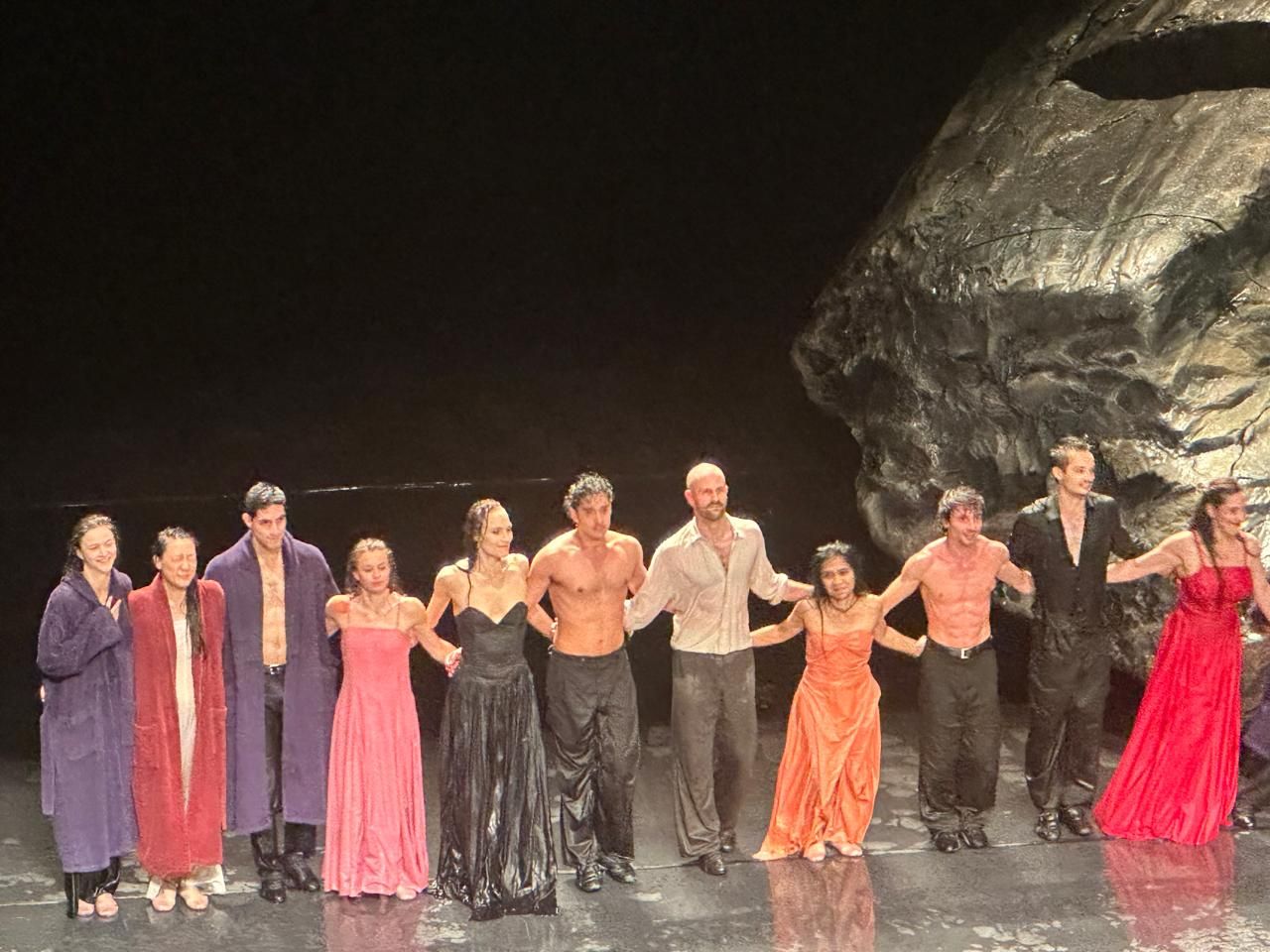
This May in Paris, the Théâtre de la Ville hosted Vollmond, one of Pina Bausch’s masterpieces. Premiered in 2006, this emblematic work of the Tanztheater Wuppertal delves into themes of love, solitude and the human condition, all within a stunning, water-filled set—poetic and haunting. A return to a performance that transcends time and space.
In May, the Théâtre de la Ville in Paris became the stage of an emotional encounter with Vollmond, a seminal work by German choreographer Pina Bausch. Created in 2006 at the Tanztheater Wuppertal, this dreamlike piece immerses the stage in water, hypnotizing its audience with a deeply sensitive reflection on human connection, desire and loneliness. True to Bausch’s legacy, Vollmond weaves raw emotion and exacting physicality into a stark yet poetic stage design.
Back in May 2006, Pina Bausch introduced Vollmond to the world—a striking creation marked by its lunar and aquatic scenography. Unusually, the piece had a title from the start and was presented as fully realized on its premiere night. At the time, Bausch had recently drawn inspiration from travel (Rough Cut from Seoul, Bamboo Blues from India), but Vollmond required no such journey. It turned inward, exploring the human soul through elemental nature. In this piece, her dancers—both free and exposed—confront solitude and engage with others in a scenography by Peter Pabst, where water becomes a vital and sensual part of the performance. Vollmond was one of four works featured in Wim Wenders’ 3D tribute film Pina.
Pina Bausch, who passed away in 2009, was the visionary choreographer who established dance-theater as a form where physical technique meets emotional truth. Her performers went beyond technical feats—though achieved through relentless rehearsal—to convey deeply personal, inner worlds within a precisely constructed narrative framework.
In Vollmond, recently revived in Paris, water is not just an element—it’s the anchor. The performers cling to it like a rock. They slip, stumble, fall, rise again, splash, collide, part and reunite in an eternal dance of interaction and attraction. In Bausch’s world, there’s no dominance or submission. Human beings are in constant pursuit of comfort—whether alone or with others.
One essential question pulses through the work: “Which is better—eternal love or a little love every day?” The performers, caught in this dilemma, never quite find the answer. The audience, stunned during intermission and overwhelmed at the final curtain, offered endless ovations that could scarcely contain their admiration and awe.
Flowing dresses, undone hair, solid blocks of vivid color—this is Bausch’s signature: a visual language that complements her core message, which is emotional honesty, expressive freedom, rigorous technique and precision in movement.
Over the course of three hours, the dancers confront themselves, each other and the elements. Nature becomes their artistic canvas. Water and stone bear witness to their stories, their lives, their dance.
This is a dance that defies boundaries and breaks every rule. It moves between life and death, touching the rawness of solitude and the ache of bodies that search, graze, connect and part. This is the spirit of Pina Bausch—a spirit of bodies in motion, fully alive. One that will endure, undeterred by time or space.
Even after her departure, she left within her performers a living hymn to life and an ode to death.


Comments